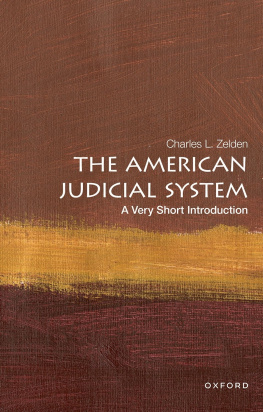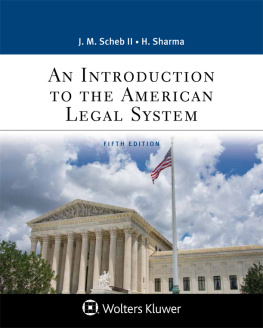Recent Titles in the
CONTEMPORARY WORLD ISSUES
Series
Modern Slavery: A Reference Handbook
Christina G. Villegas
Race and Sports: A Reference Handbook
Rachel Laws Myers
World Oceans: A Reference Handbook
David E. Newton
First Amendment Freedoms: A Reference Handbook
Michael C. LeMay
Medicare and Medicaid: A Reference Handbook
Greg M. Shaw
Organic Food and Farming: A Reference Handbook
Shauna M. McIntyre
Civil Rights and Civil Liberties in America: A Reference Handbook
Michael C. LeMay
GMO Food: A Reference Handbook, Second Edition
David E. Newton
Pregnancy and Birth: A Reference Handbook
Keisha L. Goode and Barbara Katz Rothman
Hate Groups: A Reference Handbook
David E. Newton
Plastics and Microplastics: A Reference Handbook
David E. Newton
Prescription Drugs: A Reference Handbook
David E. Newton
The U.S.-Mexico Border: A Reference Handbook
Michael C. LeMay
Homelessness in America: A Reference Handbook
Michele Wakin
Books in the Contemporary World Issues series address vital issues in todays society such as genetic engineering, pollution, and biodiversity. Written by professional writers, scholars, and nonacademic experts, these books are authoritative, clearly written, up-to-date, and objective. They provide a good starting point for research by high school and college students, scholars, and general readers as well as by legislators, businesspeople, activists, and others.
Each book, carefully organized and easy to use, contains an overview of the subject, a detailed chronology, biographical sketches, facts and data and/or documents and other primary source material, a forum of authoritative perspective essays, annotated lists of print and nonprint resources, and an index.
Readers of books in the Contemporary World Issues series will find the information they need in order to have a better understanding of the social, political, environmental, and economic issues facing the world today.
CONTEMPORARY WORLD ISSUES
The Judicial System
A REFERENCE HANDBOOK
Michael C. LeMay

Copyright 2022 by ABC-CLIO, LLC
All rights reserved. No part of this publication may be reproduced, stored in a retrieval system, or transmitted, in any form or by any means, electronic, mechanical, photocopying, recording, or otherwise, except for the inclusion of brief quotations in a review, without prior permission in writing from the publisher.
Library of Congress Cataloging-in-Publication Data
Names: LeMay, Michael C., 1941 author.
Title: The judicial system : a reference handbook / Michael C. LeMay.
Description: 1st Edition. | Santa Barbara, California : ABC-CLIO, LLC, 2022. | Series: Contemporary world issues | Includes bibliographical references and index.
Identifiers: LCCN 2021043844 (print) | ISBN 9781440874574 (print) | ISBN 9781440874581 (ebook)
Subjects: LCSH: Justice, Administration ofUnited StatesHistory. | CourtsUnited StatesHistory.
Classification: LCC KF8700 .L46 2022 (print) | LCC KF8700 (ebook) | DDC 347.73dc23/eng/20211004
LC record available at https://lccn.loc.gov/2021043844
LC ebook record available at https://lccn.loc.gov/2021043845
ISBN: 978-1-4408-7457-4 (print)
978-1-4408-7458-1 (ebook)
26 25 24 23 22 1 2 3 4 5
This book is also available as an eBook.
ABC-CLIO
An Imprint of ABC-CLIO, LLC
ABC-CLIO, LLC
147 Castilian Drive
Santa Barbara, California 93117
www.abc-clio.com
This book is printed on acid-free paper 
Manufactured in the United States of America
Contents
Taraleigh Davis
Troy W. Hinrichs
Timothy R. Johnson and Rachel Houston
Scott Merriman
Dennis McKinney
Mark C. Miller
Joseph Postell
Chuck Stewart
Preface
By intentional design, the United States has a very complex system of government. Given their experience with an oppressive English government and the kings appointed colonial governors, the Founding Fathers feared the potential for a national government to become too powerful and oppressive. To limit the power of government, they designed the federal system with a checks and balances system. It divided power into three levels of government: local, state, and national (federal). It further divided government into three coequal branches of government: legislative, executive, and judicial.
Because each state establishes its own judicial system as to courts, judges, methods of selecting judges, other officers of the court, and the jurisdiction of the courts at the various levels, the U.S. judicial system can be bewildering and confusing to navigate. Since each state designs its judicial system, they use different terms or names for their courts, and the terminology varies from state to state so that different states use the same name or designation for different courts, and in other cases, different names for the same level or type of court. There is extensive variation in the jurisdiction of the various levels of courts and what sorts of fines, penalties, or terms of imprisonment are associated with what types of criminal behavior. And as is true for virtually all matters of law, the judicial system uses specialized terminology or jargon that can be confusing or even impenetrable to someone not trained in the law.
The Judicial System: A Reference Handbook is designed to help the reader cope with that complexity. In the United States, law is influenced by English common law, and so it reflects judge-made law. The use of precedent and of the judicial principal of stare decisis mean that judges and courts follow the decisions of preceding rulings of that court and comply with the decisions handed down by higher-level courts. The Judicial System also uses institutional analysis to clarify the elaborate systems used to structure judicial power by the national and state governments. The various courts in the judicial system all play a role in the checks and balances system intended by the founders to limit the power of government.
As this volume hopefully makes clear to the reader, the basic constitutional documents of Americas federal and state governments intentionally allowed for the evolution of the nations judicial system. As the United States expanded its frontiers, as its population became ever more demographically diverse, and as its economy became more complex, the judicial system evolved as well.
Like all volumes in the Contemporary World Issues (CWI) series, The Judicial System follows a set format for the structure and content of each chapter.
discusses the history and background of the U.S. judicial system and the political factors that have shaped its character over the decades. It spans the colonial period and the pre-constitutional period (Articles of Confederation), through the establishment and amending of the federal judiciary to modern times. It also provides details on state and local court systems in each of the fifty states.
is comprised of nine original essays that provide perspectives on a wide range of issues confronting national and/or state judicial systems.
think-tank approach offering scholarly analysis of controversial issues facing the judicial system. The chapter also profiles individuals who have had a significant impact on the judiciary, including chief justices and associate justices of the U.S. Supreme Court, the two most recent presidents, members of the influential Senate Judiciary Committee, and one individual plaintiff in a federal case ( Gideon v. Wainwright ) that proved enormously influential in shaping criminal law and how state governments and state courts handled criminal case procedure. Arguably, the entire public defender system now so commonly used emerged because of the Gideon v. Wainwright decision.
Next page










